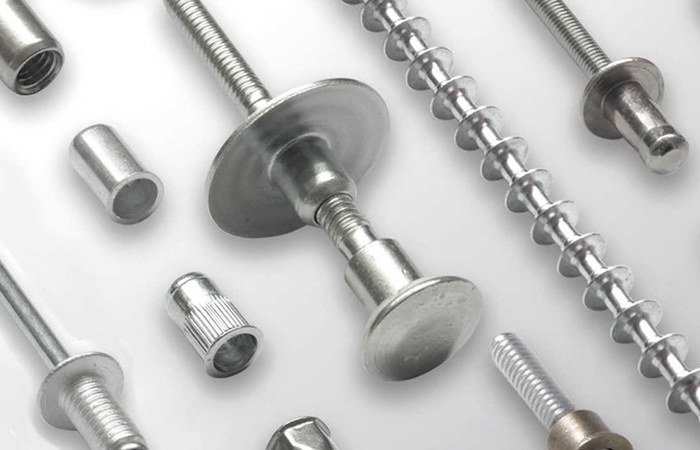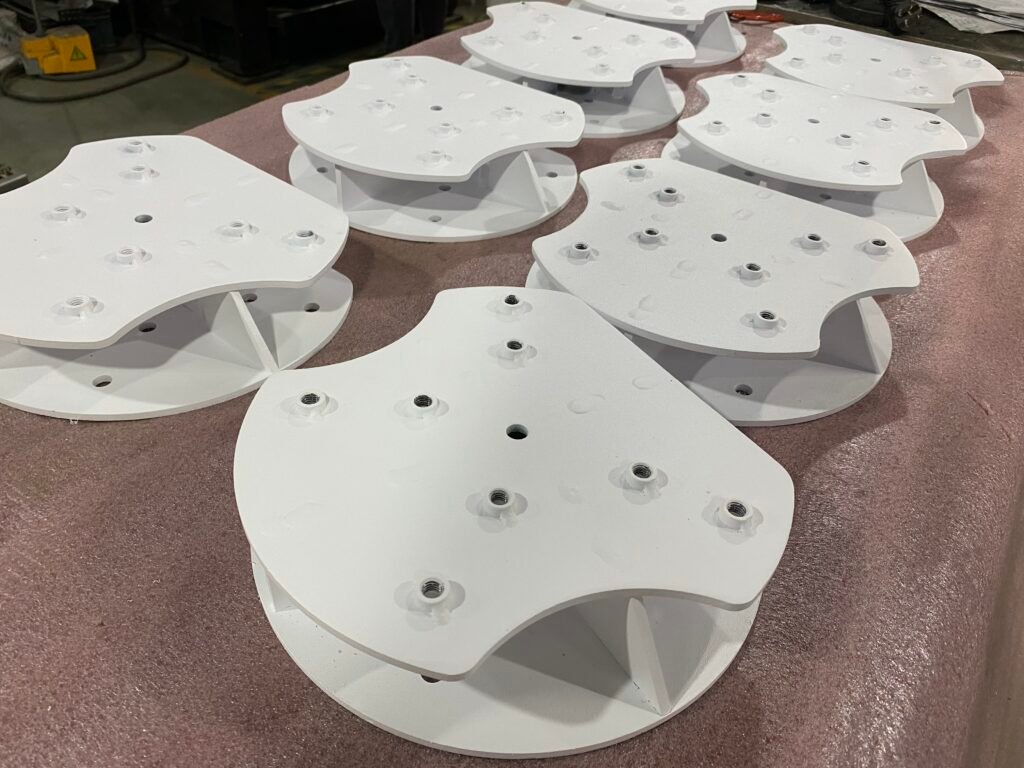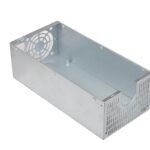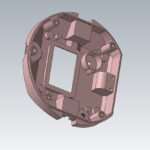QBH Technology uses Welding or Riveting when creating something that needs the joining of two metals. Permanent connecting procedures such as welding and riveting are both widespread.
Welding and riveting both have advantages and disadvantages when creating a long-lasting product.
What Is the Process?
The head is a hemispherical dome, while the tail is a smooth cylindrical shaft. When we smash the tail’s substance into a flat shape, a new head forms on the tail’s side, secures the rivet in place and binds the metal components together.
We refer to the distorted one as the “shop head,” while the “factory head” is the name given to the original charge. If you want high-quality manufacturing solutions, visit QBH Technology.

Welding vs. Riveting: What’s the Difference?
Even though these are metal joinery procedures, they have very little. Welding uses heat to melt the metal, whereas riveting uses mechanical fastening (rivet).
What do we mean by Welding?
When it comes to joining metals, welding is the most used manufacturing process. Welding is another method for joining two components together, and we may do it either by hand or by a CNC machine.
Rather than relying on an internal heat source to melt the metal components as we join them, welding utilizes an external source of high heat to do it.
Welded joints are usually more efficient than riveted ones.
Welding always provides a smooth, pleasing structure. It is also comparable in strength to a rivet.
Welded buildings are less weight than riveted structures. It is because gussets are not utilized in welding, reducing weight.
In contrast, there is no way to make changes or additions to the welded structure once we insert a rivet.
Welding has certain drawbacks, such as inconsistent heating and cooling. This component may inhibit extra strains on the metal.
It takes longer to check for flaws in weld structures. It is because of the heating and cooling process, which means extra work for the fabricator.
Welding Benefits:
Especially when compared to riveting, welding has several benefits. These benefits are in strength, durability, and flexibility.
Welding is a very efficient process that can sustain enormous loads if constructed. Besides, the procedure is quite adaptable.
We may use the welding technique on various materials, from stainless steel to titanium. We can also use it for projects of all sizes, from tiny to large, heavy to light.
Welding metal joints seal them and prevent any liquid, gas, or solid from passing through the seam.
It is a significant consideration compared to Riveting, welding is a more versatile, useful, and metal joining method.

What do we mean by Riveting?
CNC riveting fastens geometric forms, from simple to complicated. Rivets feature a dome-shaped head on a cylindrical metal shaft or mandrel.
When linked through the hot drilled holes, these fasteners form a watertight seal.
The rivet compresses as the metal cools, fusing the two pieces. Riveted constructions tend to be heavier than welded. Aluminum, stainless steel, and copper are a few metals that might enjoy blind rivets.
Once we drill the hole, we insert the rivet into the hole. When the machine reaches its predetermined max force, the mandrel of the rivet bursts off. It results in a “blind” or flush-looking rivet inserted.
No one can under-torquing rivets, which is one of the major benefits of riveting.
As long as we choose the diameter and grip range of the rivet, it will always install. As one of the oldest technologies, we may tract riveting back to before World War II.
We may use Machine-controlled riveting may in various applications. These applications are constructing airplanes, manufacturing tiny electronics, recreational vehicles, and even submarines.
Faster turnaround times are possible by CNC riveting machines built for production lines.
Riveting Benefits:
The key advantages of adopting the riveting method for metal joinery are:
• The huge financial savings.
• The reduced skill requirements.
• The ease with which we may join thinner or different metals.
Riveting metal costs less than welding, so it is more popular. For example, you may buy a rivet gun (or riveting equipment) for as little as $5USD. You can also get high-quality rivets for a few pennies each.
We need to make Predrilling holes across a metal joint, insert the rivet into the gun, and then release the trigger.
The metal has now welded together in a secure junction. Welding necessitates using a TIG or MIG welding machine, a shielding gas, filler material, equipment, and much time. Riveting is simpler and more cost-effective.
Riveting is a better option than welding. It is better for joining thin materials or materials with differing properties (such as stainless and carbon steel).
These materials demand a lot of expertise, patience, understanding, and more specialized welding gear to weld them well.
A simple method for riveting a variety of various metals is the same regardless of their thickness. Predrilling the hole and inserting the rivet are the only steps required compared to welding.
Rivet Strength vs. Weld Strength!
Riveting vs. welding is a subject that many individuals ask themselves at some point in their lives. Knowing the difference will help you select the best method for the task at hand.
Have you ever taken notice of how many rivets there are on an airplane’s wing?
When working with metals like aluminum, which is difficult to weld, riveting is the method of choice.
It’s more suited to installing a car bumper than welding since it’s better suited to lighter and thinner materials.
The most common riveting methods are a rivet gun or a hammer and a mechanical squeezer.
We may use welding to fix everything from a motorbike exhaust pipe to a shattered engine block.
Welding may not always be the best option. As strong as the base metal, a welded seam is. Weld joints are more susceptible to faults when correct post-welding processes are not followed, which is an issue.
While welding is difficult to examine and test for strength, riveting provides a safe means.
It provides a safe means to combine metals in essential applications like bridge construction.
Common Rivet Types!
When we assemble a product or workpiece, we use a rivet to hold it in place. They have a bolt-like shape with a broad head attached to the shaft.
Its tail grows up to one-and-a-half times in diameter when hammered into a product or workpiece. But, the manufacturing sector uses various rivet types. We have listed some of them below.
Type#1: Solid Rivets
With some instances reaching back to the Bronze Age, solid rivets, sometimes known as round rivets, Rivets are in use for centuries. They’re made up of a shaft and ahead. After driving in the rivet, producers use a crimping tool to distort and extend the shaft. It helps in creating a more robust rivet.
Type#2: Rivets for Steel Structures
Structural steel rivets are like solid rivets. They are particularly engineered for use in high-stress commercial buildings.
Before installation, we heat structural steel rivets in a furnace to soften the metal. This procedure makes it simpler to work with.
Type#3: Split Rivets
When it comes to split rivets, we split the shaft into opposing directions. As with a wall anchor, the shaft of a split rivet expands in opposing directions when driven into a product.
Split rivets comprise soft materials like plastic or wood. They are appropriate for usage in items and workpieces made of these materials.
Type#4: Blind Rivets
Blind rivets, also known as pop rivets, consist of a rivet and a mandrel.
Type#5: Flush Rivets
After installation, most rivets stick out of the product or workpiece. Contrary to their namesake—which is that they sit flush with their surroundings—flush rivets do exactly what their name implies:
For industrial applications where aerodynamics are a consideration, flush rivets. Flush rivets are, also known as countersink, or countersunk rivets come into use.
We may improve Aerodynamics as a result of their proximity to the product.
Type#6: Friction Rivets
For a Friction Rivet to stick, we must insert the shaft far enough into a product or workpiece.
For this reason, you should only use friction rivets when they are well-used in the product.

Types of Welding!
Flashdance was a popular movie in the 1980s. Many individuals got the idea of working as welders due to the film’s female heroine, Jennifer Beals. She worked in a Pittsburgh steel factory.
Even though the movie and Jen’s welding talents were both blasted by the reviewers, the actress Jennifer managed to make welding appear gorgeous.
Jen was eager to perform a poor job at welding. The director wanted more sparks on camera despite having studied the craft for two months before filming. She’ll be exempt from prosecution.
Welding is, in fact, a serious job, despite what movies would lead you to believe. It is a skilled technique employed to put metal components together. For example, what are the many forms of welding?
Type#1: MIG Welding
Beginners will have an easier time mastering the art of MIG welding. MIG welding is, in fact, a two-step process.
It is possible to fuse thin metal sheets using bare wire MIG welding. A rotating central point because MIG welding does not need a flow meter or a gas source. We may use it outdoors.
Hobby welders who can’t afford high-end equipment turn to MIG welding. It becomes their primary method of joining metals.
Type#2: Stick Welding
Old-school Arc welding, or stick welding, is the only welding technique. This skill is more difficult to learn than MIG welding, but we can do it at home with low equipment costs. Stick welding makes use of a welding rod with a stick electrode.
Type#3: TIG Welding
Although TIG welding is one of the most difficult procedures to master, Lincoln Electric TIG welders are some of the best in the business.
TIG welding necessitates the use of two people. While holding a TIG flame in one hand, the welder feeds the rod with the other.
We may use TIG welders to weld Steel, stainless steel, chromium, aluminum, nickel alloys, and even gold.
Bike frames, lawnmowers, and fenders are examples of items that can enjoy the TIG welding process.
Type#4: Arc Plasma Welding
In-plane applications where metal thickness is less than 0.015 inches, plasma arc welding is a typical method of precision welding. An engine blade or an air seal might be an example of this.
Compared to TIG welding, plasma arc welding utilizes ionizing gases within the arc to generate heat instead of the electrode.
The shielding gas comprises argon plus 2 to 5 percent hydrogen, with argon serving as the plasma gas.
It decreases the current rating of the nozzle when using helium as plasma gas since it is hotter than the other gases used for plasma.
So, you’re interested in learning more about plasma welding. Check out this post for more information.
Type#5: Laser and Electron Beam Welding
We may achieve a precise, high-energy weld with electron beam and laser welding processes.
We may use electron beams or lasers when welding the tiniest of implantable medical devices. These devices need to offer the power necessary to weld huge spaceship components.
Welding using an electron beam is a flexible, powerful, and automated technique. Welds may be stunning from both a metallurgical and aesthetic standpoint.
Type#6: Gas Welding
TIG welding displaces gas welding as the preferred method of joining metals together.
We need Oxygen and acetylene for gas welding equipment, which we may carry anywhere. Even now, they’re still employed to reassemble broken pieces of automobile exhaust.
Young individuals who want to pursue a career as a welding technician will have several options for employment.
It is because of the severe lack of qualified welders in the U.S and throughout the world. You can use the services of QBH technology if you want high-quality fast solutions.
Final Thoughts
There are a variety of ways to attach your sheet metal components. However, welding and riveting are the most common processes. It’s important to note that each has its own set of perks and drawbacks. As a result, making a decision may be difficult.
When it comes to your project, you may require an expert’s opinion on which method best suits your needs. As a result, if you have any questions about the benefits and drawbacks of welding or riveting, don’t hesitate to get in touch with QBH Technology.
Precision manufacturing methods and a committed workforce are at the core of QBH Technology’s commitment to producing high-quality prototypes and parts.




